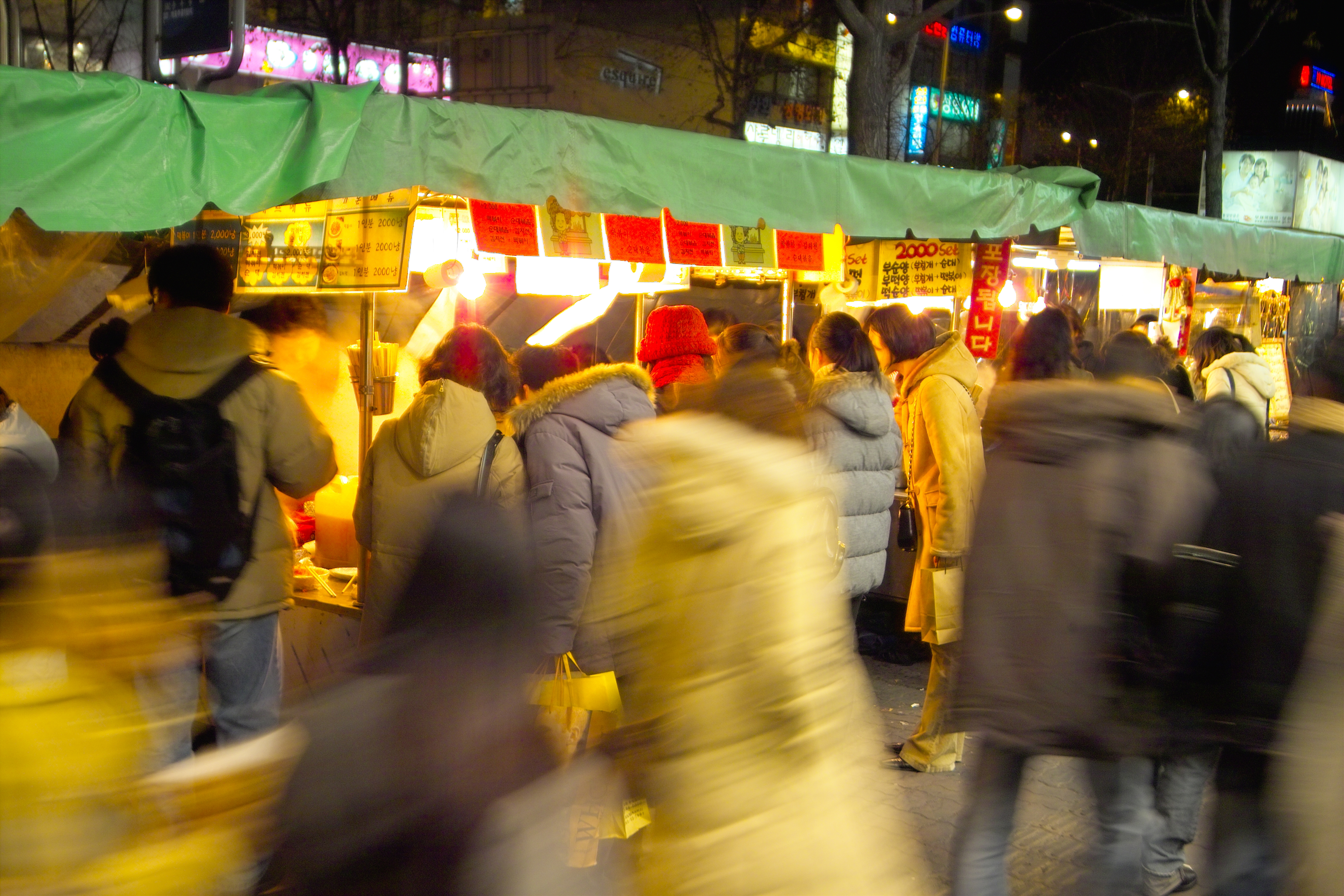Embrace the Autumn Mood at Cart Bars
Written by Cho Namhee
People who live in Korea can no longer brag about the balance of the country’s four distinct seasons like they used to. Both the summer and winter climates have intensified, and as a consequence, the seasons of spring and fall have either shortened or became more vague. Judging from the fact that Korea gets its worst concentration of yellow and fine dust in its troposphere during springtime, autumn remains the best season for outside activities. Besides the autumn foliage in Korea – the Korean cliché of what fall offers – there is a place where you can be swept away by the autumn atmosphere only at this time of the year. It is at pojang-macha (포장마차) or cart bars.
Strictly put, cart bars are distinguished from other street vendors by their menus. Street vendors with mobile carts or wagons are more commonly referred to as jangsu (장수), meaning “vender” or “merchant.” They typically offer foods like stuffed sugar pancakes called hotteok or fish-shaped pastries known as bungeo-ppang. Cart bars, by contrast, usually offer alcohol beverages like soju. Another distinction is that venders are seasonal, but cart bars are open all year round.
Dozens of cart bars in groups were commonly seen in every neighborhood in the early 2000s. However, issues related to hygiene and tax evasion triggered the need for the stronger implementation of rules and policies on street vendors, and thus, many of them have discontinued operation after the frequent crackdowns organized by the government. In other words, the cart bars and vendors we see on the streets now are running their businesses more legitimately than those of the past.
Pojang-macha used to symbolize the struggles of living in Korea. The cheap food and beverages sold at these cart bars attracted people with light wallets, especially those who could only afford a bottle of soju and the complimentary soup or snacks served on the side. Moreover, often the people who could not afford the rent for an indoor business started off with a cheap mobile cart. These scenes began to appear more in Korean soap operas and gained the sympathy of audiences in the past. Now, they give visitors a retro feeling.
Cart bars typically open in the evening and stay open until late at night. The mildness of the autumn season and the atmosphere surrounding the outdoor bars at night will mesmerize you completely. They are best enjoyed with good friends and some drinks. The very last pack of pojang-macha can be found at Gwangju Park near the Gwangju Stream. Nobody knows when they will disappear, but their days are likely numbered.
The Author
Cho Namhee, an over-zealous sports fan, is a free spirit who calls Gwangju home. He studies communications at Chonnam National University and works for the 18th FINA World Championships, Gwangju 2019.







